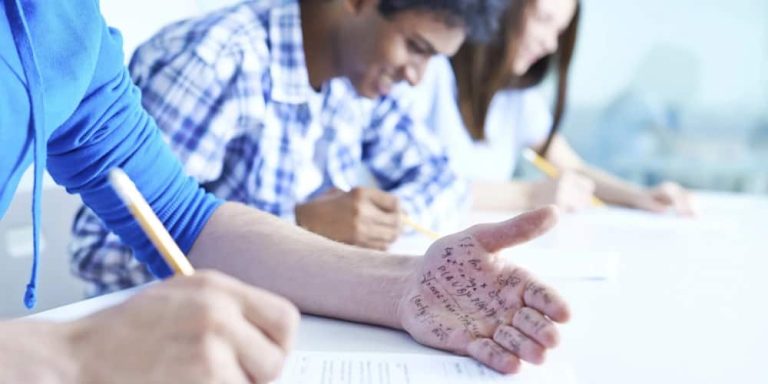Basic Science -Week 8:Sense Organs I (Eye and Ear) CLASS: JSS 3
______________________________________________________________________________
WEEK 8
TOPIC: Sense Organs I (Eye and Ear)
CLASS: JSS 3
DURATION: Two Periods
LEARNING OBJECTIVES:
By the end of the lesson, students should be able to:
- Draw and label the diagram of the eye and ear.
- Identify and explain the parts of the eye and their functions.
- Identify and explain the parts of the ear and their functions.
- Explain the effects of eye and ear problems on humans.
KEY VOCABULARY WORDS:
- Retina
- Lens
- Cornea
- Optic nerve
- Pupil
- Iris
- Cochlea
- Eardrum
- Auditory nerve
- Deafness
INSTRUCTIONAL MATERIALS / RESOURCES:
- Charts or models of the eye and ear
- Diagrams on cardboard or projector slides
- Mirror (for students to observe their own eyes and ears)
- Textbooks
BUILDING BACKGROUND / INTRODUCTION:
Begin the lesson by asking students:
- “How do you see things around you?”
- “How do you hear the sound of my voice?”
Guide them to understand that the eye helps us see, while the ear helps us hear.
Explain that both are part of the five sense organs in humans — eye, ear, nose, tongue, and skin.
PERIOD 1: THE EYE
STEP 1: Introduction
The teacher explained that the eye is the organ of sight. It enables us to see, interpret, and understand light, color, and objects.
STEP 2: STRUCTURE OF THE EYE
Main Parts and Their Functions:
| Part of the Eye | Functions |
| Cornea | A transparent outer layer that allows light into the eye. |
| Pupil | The small opening that controls the amount of light entering the eye. |
| Iris | The colored part that controls the size of the pupil. |
| Lens | Focuses light onto the retina. |
| Retina | Contains light-sensitive cells that detect images. |
| Optic Nerve | Carries messages from the retina to the brain. |
| Aqueous & Vitreous Humour | Fluids that keep the eye in shape and nourish it. |
| Eyelid & Eyelashes | Protect the eye from dust and injury. |
STEP 3: FUNCTIONING OF THE EYE
Explain:
Light enters through the cornea, passes through the pupil and lens, and forms an image on the retina.
The optic nerve sends signals to the brain, which interprets what we see.
STEP 4: COMMON EYE DEFECTS
| Defect | Cause | Correction |
| Short-sightedness (Myopia) | Eye too long or lens too strong | Concave lens |
| Long-sightedness (Hypermetropia) | Eye too short or weak lens | Convex lens |
| Astigmatism | Uneven cornea | Cylindrical lens |
| Cataract | Cloudy lens | Surgery |
WRAP-UP / ASSESSMENT (Period 1):
- Mention three main parts of the eye.
- What is the function of the retina?
- State two common eye problems.
ASSIGNMENT (Period 1):
Draw and label a neat diagram of the human eye.
______________________________________________________________________________
PERIOD 2: THE EAR
STEP 1: INTRODUCTION
The ear is the organ of hearing and balance. It helps us detect sound and maintain body balance.
STEP 2: STRUCTURE OF THE EAR
The ear is divided into three main parts:
| Part of the Ear | Major Components | Functions |
| Outer Ear | Pinna and ear canal | Collects and directs sound waves to the eardrum. |
| Middle Ear | Eardrum, hammer, anvil, stirrup | It transmits sound vibrations to the inner ear. |
| Inner Ear | Cochlea, semicircular canals, auditory nerve | The cochlea converts sound into signals, while the semicircular canals maintain balance. |
STEP 3: FUNCTIONING OF THE EAR
Sound waves enter through the pinna, hit the eardrum, and cause it to vibrate.
These vibrations move through the hammer, anvil, and stirrup into the cochlea, which changes them into nerve impulses sent to the brain through the auditory nerve.
STEP 4: COMMON EAR PROBLEMS
| Ear Problem | Causes | Effects / Correction |
| Deafness | Loud noise, infection, injury | Use hearing aids or medical treatment |
| Ear infection | Dirty water or bacteria | Seek medical attention |
| Wax blockage | Excess earwax | Cleaning or ear drops |
WRAP-UP / ASSESSMENT: Mention the three main parts of the ear.
- What is the function of the cochlea?
- List two common ear problems and their causes.
ASSIGNMENT (Period 2):
Draw and label a neat diagram of the human ear.
GENERAL WRAP-UP:
Both the eye and ear are important sense organs. The eye helps us see, while the ear helps us hear and maintain balance. Keeping them clean and protected prevents many problems.
HOD/VP’S COMMENT & ENDORSEMENT:
_______________Signature & Date
______________________________________________________________________________
NOTE: You Can Get Your Complete Notes In All Subjects For All The Classes In Detail, Lesion And Plane From the US At An Affordable Price In PDF or Word Document Download On Your Computer. Get In Touch With Us On: WhatsApp: +2348102326329/ Call: 08076206066
You Can Get the Complete Lesson Note Download On Your Phone Now By clicking the Link Below For Each Class:
______________________________________________________________________________
TRANSFORM LIVES WITH DIVINE GUIDANCE WITH IMPACT COMPLETE BASIC SCIENCE LESSON NOTE
AGRICULTURAL SCIENCE LESSON NOTES WEEK 8: Forest J S 2 3RD TERM








